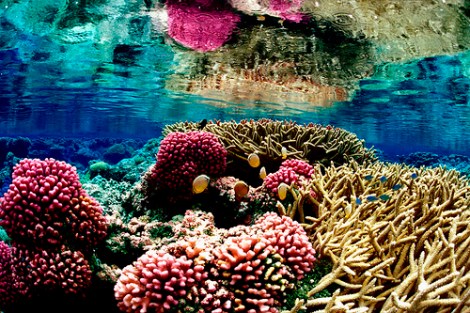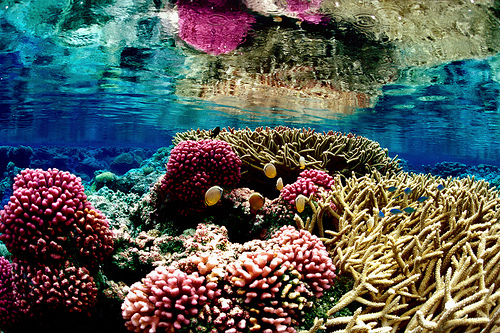
Coral. (Photo by U.S. Fish and Wildlife Service.)
The tagline is simple, if oddly capitalized:
Climate Change is changing Australia’s ocean environment.
It’s the seven-word summary of Australia’s Commonwealth Scientific and Industrial Research Organisation’s (CSIRO) new assessment of how shifts in the climate are affecting the waters around the island nation. The key: that “is,” above. This is happening.
Climate change is already happening: Widespread physical changes include rapid warming of the southeast and increasing flow of the East Australia Current. Increasing biological impacts include reduced calcification in Southern Ocean plankton and Great Barrier Reef corals from both warming and acidification.
Since a prior report released in 2009:
There is now striking evidence of extensive southward movements of tropical fish and plankton species in southeast Australia, declines in abundance of temperate species, and the first signs of the effect of ocean acidification on marine species with shells.
They offer evidence. Water temperatures are rising …
Ocean temperatures around Australia have warmed by 0.68oC since 1910-1929, with south-west and south-eastern waters warming fastest. The rate of temperature rise in Australian waters has accelerated since the mid-20th century; from 0.08oC/decade in 1910- 2011 to 0.11oC/decade from 1950-2011.
… which is, as mentioned above, already affecting wildlife as tropical fish are migrating further south. This is the Southern Hemisphere, remember, so that means that warm-water fish are moving into areas that are traditionally cooler.
There have also been increasing anecdotal reports of larger tropical species being sighted and caught as far south as Perth in Western Australia in recent years. … These observations indicate that range shifts by tropical species are already underway.
Sea levels are rising.
Sea levels are rising around Australia, with fastest rates currently in northern Australia. New analyses of sedimentary records from the east coast of Tasmania confirm slow sea-level change over 1000s of years until the early 20th century, when there was a significant acceleration in the rate of sea-level rise. High sea-level events on annual to decadal timescales have increased by a factor of three during the 20th century.
Acidification is increasing.
[R]educed calcification observed in Southern Ocean zooplankton suggest ocean acidification is already impacting biological systems.
The sobriety of the reporting tends to have a lulling effect. Ah, so this is what’s happening, as we thought it would, yes, yes, I see. Until you realize that we’re whipping past those long-predicted road signs that read DEAD END and ROAD ENDS IN 2 MILES.
There’s an easy solution, of course. Australia should take the North Carolina route and stop measuring how the oceans are changing. As their 2009 and 2012 reports prove, it only encourages the climate to change.



